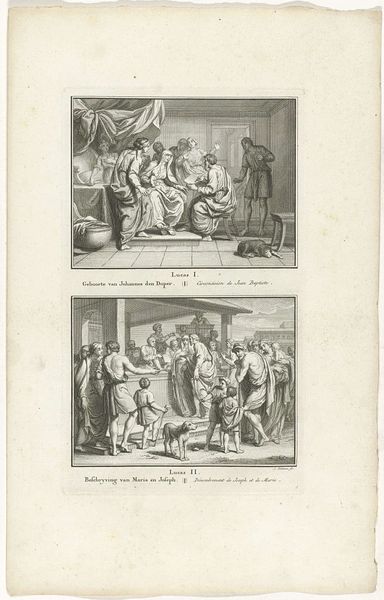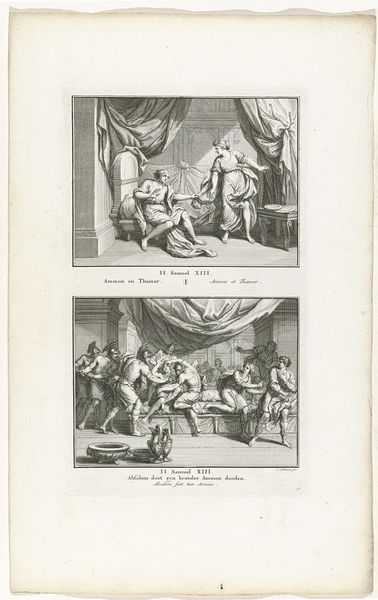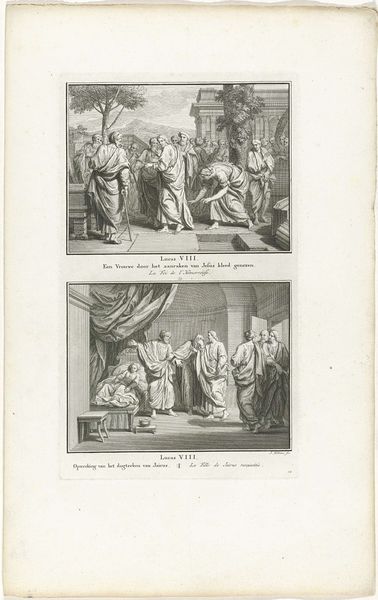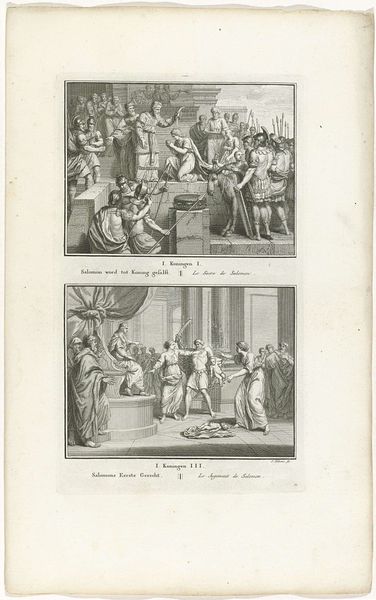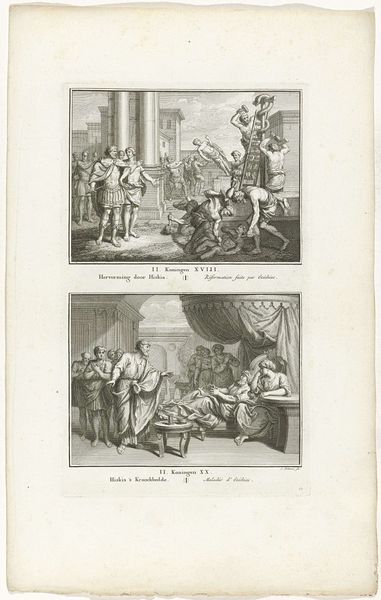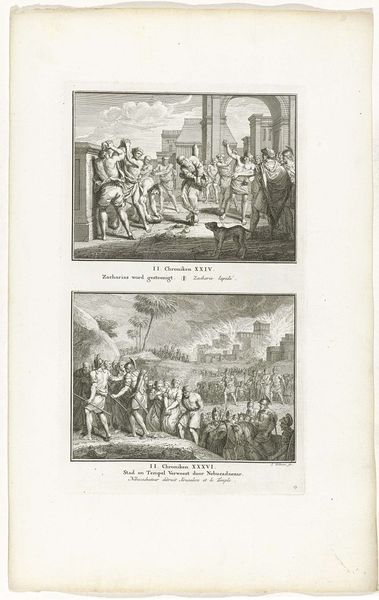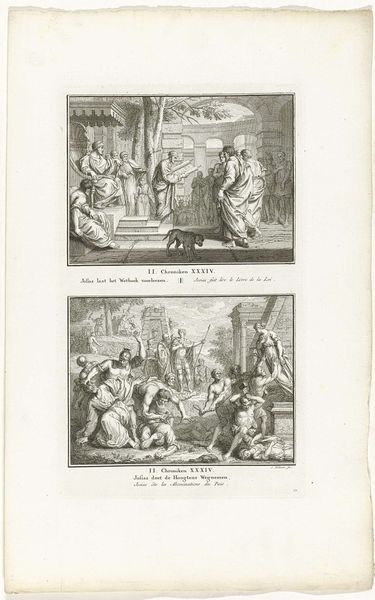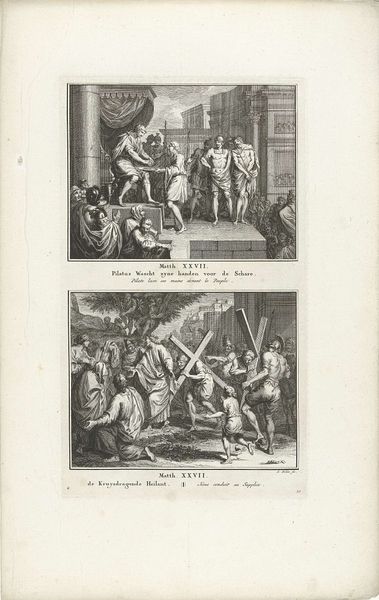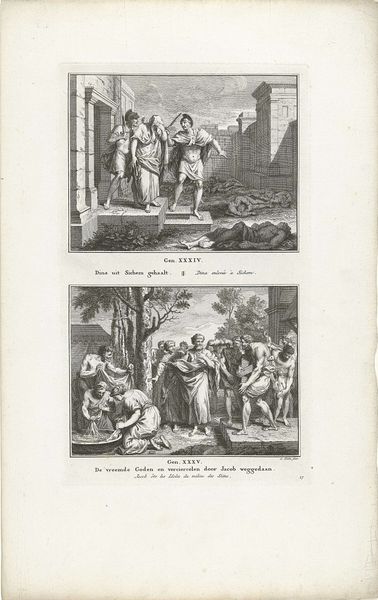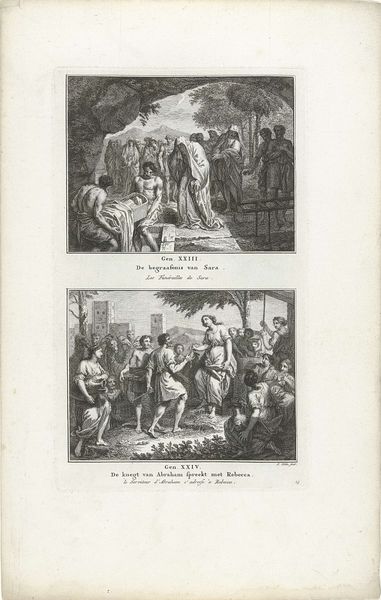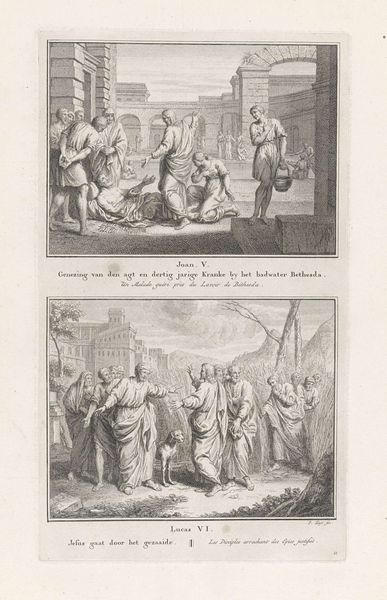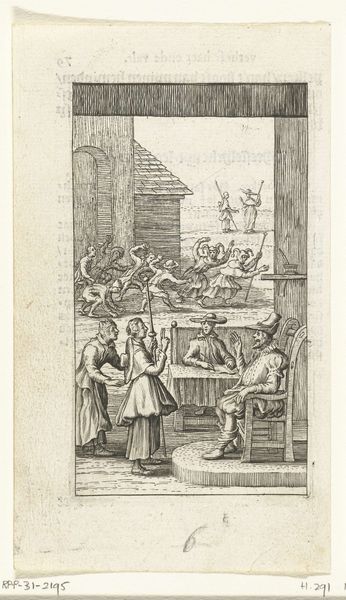
Dimensions: height 323 mm, width 191 mm
Copyright: Rijks Museum: Open Domain
Curator: Before us, we have a 1791 print by Jacob Folkema, entitled "Samuel snijdt Agag in stukken en David speelt harp voor Saul." It resides in the Rijksmuseum. Editor: Intriguing! Even at this scale, there's a clear juxtaposition. One scene bristles with violent energy, while the other projects a subdued, almost melancholic air. The lines feel quite crisp, adding to the dramatic effect. Curator: Indeed. Folkema cleverly uses contrasting scenes from the Old Testament. The upper vignette depicts Samuel's brutal execution of Agag, King of the Amalekites. Consider the strong diagonal lines directing your gaze towards Samuel wielding the sword and Agag’s arched back. Editor: And the lower scene portrays David playing the harp for Saul. What's immediately noticeable is the sense of enclosure. David is bathed in light but seems imprisoned by the heavy drapery and watchful guards. What power dynamics might the original paintings suggest, translated into the public domain of the print? Curator: An interesting observation. There's certainly a visual stratification created by the use of foreground and background elements in both scenes. We see hierarchies established, emphasizing Samuel's righteous fury and David's subservient role, though he is literally illuminated. The crisp, almost austere lines common in Baroque engravings lends a sense of classical legitimacy, lending power to the images. Editor: And these scenes have clear resonance in Dutch History. The execution might represent necessary and lawful justice in turbulent times, even colonial or post-colonial moments of military expansion, but that depends entirely on a cultural reading! Is the presentation itself almost a judgement of taste? It can't have been a random pairing... Curator: Perhaps. It is possible that a contemporary audience understood Folkema to explore questions of justice, power, and morality within the context of Biblical narrative. Each image presents a problem regarding justice—the stark opposition of Samuel versus David, the execution versus music as modes of behavior are potent. Editor: It highlights the enduring power of visual art to function as more than mere illustration, serving as commentary in its own right, and of how this commentary changes and matures throughout time. Curator: Agreed, it serves as an interesting historical document regarding Dutch taste and artistic practices of the period, as well. Thank you for these enlightening insights.
Comments
No comments
Be the first to comment and join the conversation on the ultimate creative platform.
